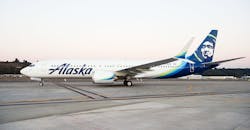FAA Directs New Inspections for 737 MAX Operators
The Federal Aviation Administration (FAA) has issued a directive to operators of Boeing 737 MAX jets requiring them to conduct further inspections of the aircraft’s automated flight-control system. The directive now makes official and mandatory the instructions that Boeing drafted and released in December 2020, recommending that jets with over 6,000 flight hours should be subjected to electronic system reviews.
The directive affects 72 aircraft operated by U.S. carriers and 389 aircraft worldwide, the FAA said.
The 737 MAX is a twin-engine, single-aisle jet and the top-selling aircraft for Boeing.
FAA said its directive addresses “potential latent failure of a flight control system function” if combined with “unusual flight maneuvers or with another flight control system failure” could result in reduced controllability of the airplane.
The 737 MAX flight control system is based on a revised Maneuvering Characteristics Augmentation Systems (MCAS) software, an earlier version of which was identified as the cause of two fatal crashes in which the crews were unable to override automated responses. During a 20-month-long grounding and review of the 737 MAX program, Boeing revised the MCAS with FAA oversight.
FAA approved the MCAS update and cleared the 737 MAX to resume service in November 2020. Boeing issued maintenance and inspection instructions for 737 MAX operators, which FAA also endorsed.
FAA is directing the airlines to conduct three repetitive inspections during currently established 737 MAX maintenance programs. All the U.S.-based 737 MAX operators have included these inspections in their maintenance programs, according to FAA.
The agency also issued a Continued Airworthiness Notification to 737 MAX operators outside its U.S. jurisdiction, “to highlight the importance of these inspections to other international regulators and to operators outside the United States.”
